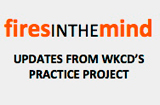
Courtesy NY Public School Parents Blog.spot, Dec. 2009
The first step in our campaign was doing research. How many students receive a free or reduced-price MetroCard? How are they funded? What impact would this have on students? (A normal subway ride costs $2.25 one-way. That would mean students’ families would have to come up with $900 to $1,000 per year per child they had in school!) We started to talk about the issue as a matter of fairness and how it would affect low-income families dramatically and have a much worse impact on low-income students.
We did research and learned that student MetroCards have been paid for by the city and state for about sixty years. Research in organizing involves more than the research you might do for a school paper. It also involves talking to people who have been working on the issue for a while. In the MetroCard campaign, we talked to a political party called the Working Families Party that advocates for better public transit. We started out by meeting with them, and they gave us some history about the funding for student MetroCards. The Working Families Party put us in touch with the Straphangers, a mass transit advocacy organization. After meeting with both of those groups we understood the history of the issue. In 1995, Mayor Giuliani said the city’s share of the funding for student MetroCards was too big a burden. He forced the MTA to agree to a memorandum of understanding that stated the funding for student fares would be shared by the city, state, and MTA (each paying $45 million to get to the $135 million/ year the MTA said it costs).
We decided we needed to learn more about the MTA and how it is funded, so we met with MTA representatives who explained the MTA budget to us. They kept saying that the burden of paying for student MetroCards should not be their responsibility and that the state and the city should pay for them.
The role of adults
This is probably a good time to tell you about the role of adult supporters (like the Community Organizing & Engagement staff at the Annenberg Institute for School Reform, or AISR) in youth organizing. Mainly their job is to give us information so we can make good strategic decisions – they help us understand the issue we are working on. AISR staff gives UYC different kinds of support, such as data analysis, research on educational reform, leadership training, and help with strategy development.
One of AISR’s UYC support staff was the one who let us know that we should talk to the MTA, Working Families Party, and Straphangers. But what we do with that information is up to us – the youth. You could say that the adult supporters give us information and guidance, but the youth make the decisions about what to work on and what tactics we will use.
One example from the MetroCard campaign is that the support staff did an analysis of how many students are living in poverty in New York City and how many of those students depend on free student MetroCards to get to school. That helped us make the argument that cutting the cards would impact nearly 600,000 students, and that their families would have to choose between things like getting their children to school or paying rent. Like we say at UYC rallies, “That ain’t right.”



